At 3:40 pm on the 28th
The world's first photovoltaic freeway
Jinan, Shandong debut
Declared open to traffic
▼
▲ open to the scene
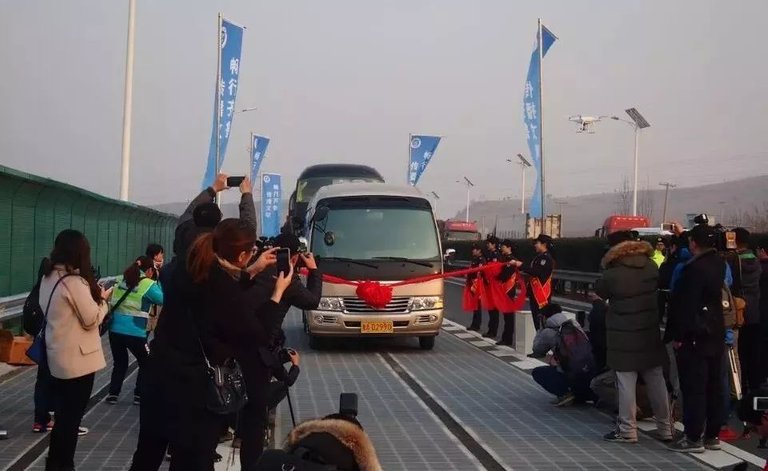
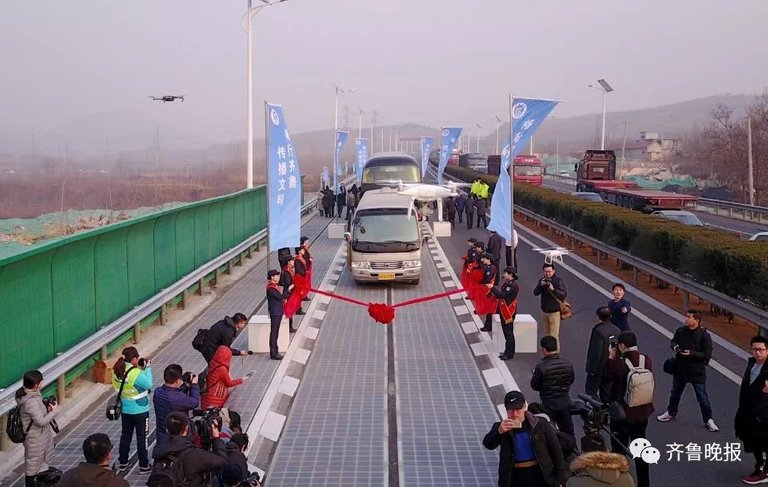
(Qilu Evening News reporter Zhou Qing first)
Photovoltaic Road opened to traffic
CCTV, including a number of media, conducted a report
Jinan headlines again today!
▼
The road section laying length of 1 km
Currently achievable
For the lights, electronic intelligence board, deicing salt spray sprinkler facilities
Provide electricity supply
The future can be achieved
Car mobile wireless charging, electric snow melt on the road,
Big data integration and analysis functions

In the construction shooting picture
We can see that
On the ground one by one under the white box
Is the solar cell

▼
This high-speed photovoltaic road is divided into three layers:
Surface contact with vehicle pedestrians
Is the protective layer is used "transparent concrete";
The middle layer is laid photovoltaic power generation components can generate electricity;
The bottom is isolated from the bottom of the insulation layer of moisture.

This means that in the future, the road will become a charging treasure and the charging will be realized while driving
Not only that
Photovoltaic road surface can also be achieved electrothermal conversion
Simultaneous melting of snow on the road
Bid farewell to expressway closed because of snow bothering
This is another major breakthrough in the field of photovoltaic pavements following Qilu Traffic's launch of the first photovoltaic pavement demonstration zone on September 29 this year. The application of load-bearing photovoltaic pavement technology to the expressways with the most stringent traffic requirements has been renewed again Public expectations of future traffic.
Bearer photovoltaic pavement technology is a technology that directly paves the photovoltaic power generation components that meet the traffic conditions of the vehicles on the road surface to realize solar power generation and other related functions and is an effective way to solve the current traffic and energy bottleneck by means of cross-border integration . Countries all over the world are scrambling to invest in R & D and promotion. Qilu Transportation has achieved global leading position in this field.
The project started in December 2016. Qilu Traffic and Tongji University and Guang Shi Energy jointly conducted in-depth cooperation in production, research and development. The project focused on the industrialization of photovoltaic road surface technology and engineering application. The research on basic system design, production of industrial components, Derivative development and other aspects of systematic research, the successful road traffic functions, power generation functions integrated in the new photovoltaic road, the use of "light-emitting concrete + photovoltaic power generation components + insulation protection," the three-tier structure, the design life expectancy, mechanical parameters, Performance indicators are higher than the existing asphalt concrete pavement.
In order to ensure technical applicability, Qilu Traffic built a 160-meter ordinary pavement demonstration area in September this year and carried out a series of application-based tests to further enhance its core technology, materials technology and its peripheral systems.
On this basis, Qilu Traffic Development Group started construction of the world's first freeway photovoltaic pavement test section in the south lane of Jinan Ring Expressway and the emergency parking zone. The trial section of 1120 meters in length, the length of photovoltaic pavement laying 1080 meters, the total net area of 5875 square meters, distributed grid-connected power generation peak power of 817.2 kilowatts, using the full Internet access mode and power generation, estimated annual generating capacity of about 1 million KWh, its economic benefits are very impressive. Taking Shandong Province as an example, it opened more than 5,700 kilometers of expressway to the highway, with an area of 66.96 million square meters for emergency parking belts and lateral traffic lanes. After laying pavement photovoltaic equipment, it generated 15.6 billion kilowatt-hours of electricity and generated electricity of 15.2 billion yuan annually. 15.5 million tons of carbon dioxide, emission reduction benefits of 4.6 billion yuan, direct benefits of 19.8 billion yuan, such as laying the whole road, the more substantial benefits.
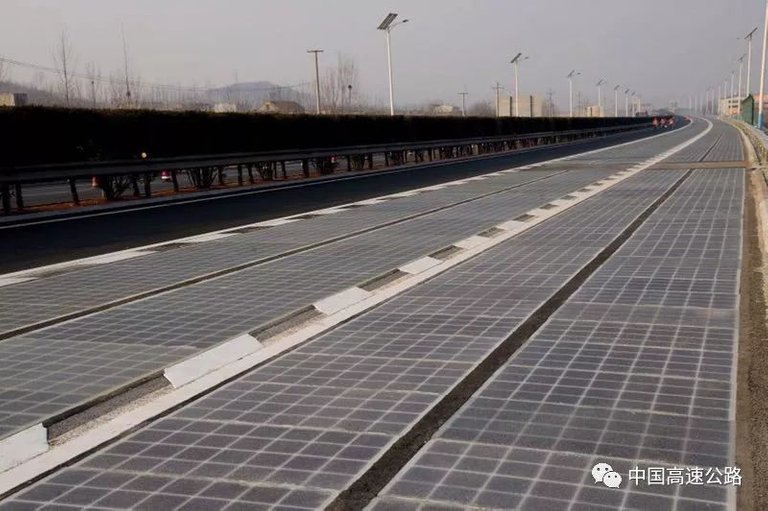
The test section currently has the function of a highway lights, electronic information board, snow melting agent automatic sprinkler facilities, tunnels and toll stations to provide electricity, I power Internet access .
In addition to the grid-connected power generation function, the core function of this test section is to test and verify the technology and the product itself by setting various harsh external test conditions, laying the foundation for further research on photovoltaic pavement technology and industrial application.
In the future, with the upgrading of technologies and the integration of related industries, PV pavements will gradually realize such functions as electronic markings, mobile wireless charging, snow melting on the road, internet coverage, big data integration and analysis .

Next, Qilu Transportation Development Group will focus on building a world-class photovoltaic business model and industrial structure, the formation of a national R & D center for photovoltaic pavement, construction of Qilu traffic high-tech industrial park, continued technical series, product line and industrial modernization series , Build an automated production line, form a large-scale production capacity, continuously upgrade raw materials and effectively reduce costs.
At the same time, we will further expand the development of photovoltaic pavement products for non-motor vehicle road areas such as ordinary highways, urban roads and urban plazas, make pre-docking of industrial chains, build integrated research and development application clusters, accelerate the development of photovoltaic pavement design, factory production and construction technologies , Quality inspection, maintenance and repair and a series of standards, declare Shandong Province and national industry standards, and actively strive for ascension as an international standard.
The industrialization of photovoltaic pavement will lead to a new revolution in photovoltaic power generation, transportation and automobile industries, break the limits of energy supply, change the future energy structure in the eastern and western regions , and gradually realize mobile charging, smart guidance, linkage of road vehicles and unmanned technology crossing development of.
do you know?
1
Is the vehicle traveling at high speed skating? Is there radiation?
On December 20, Shandong Provincial Highway Testing Center conducted professional tests on the road performance indexes such as the bearing capacity and anti-skid performance of photovoltaic pavement. All the indexes of road performance met the relevant state regulations and the pass rate reached 100%. Its rough surface, will not form a specular reflection, but will not endanger the safety of driving. Electromagnetic radiation in line with relevant state regulations. The test section has passed the acceptance to meet the design standards of expressways and freeway access requirements, size vehicles are accessible.
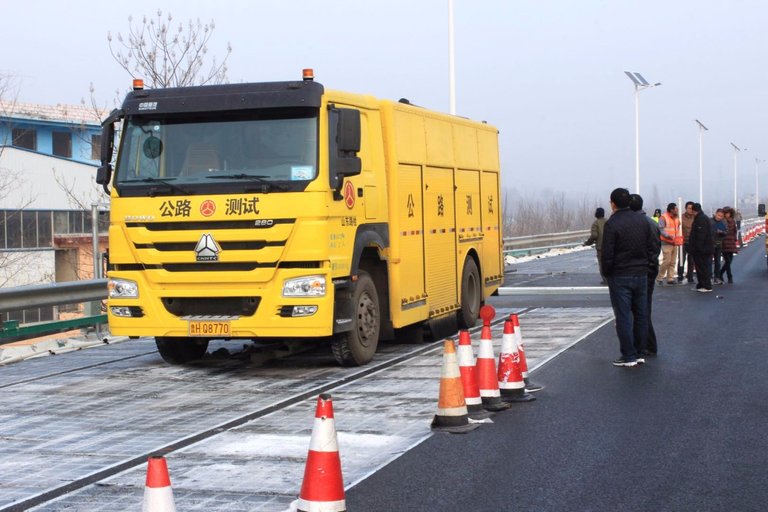
▲ Photovoltaic test section test site
2
How about the cost of photovoltaic highway?
The cost of the pilot section is currently less than half the cost of similar technology abroad. Construction costs and maintenance costs to be further formed after the industrial capacity, the statistical analysis of the formation of authoritative data. The current pilot section is mainly to verify the feasibility of the project, identify problems, deepen the study, and gradually achieve substitutability.
The pilot project investment mainly includes various expenses such as technology research and development, construction, power supply and industrial support. As the world's first freeway photovoltaic pavement pilot section, the primary significance lies in the technology research and innovation and industry integration lead. Currently, it is undergoing research and development, is in the technical incubation period, has not yet entered the stage of industrialization, and does not have the commercial cost analysis conditions.
Maintenance costs need to enter the operating period, according to the actual investment costs during the analysis of cost estimates.
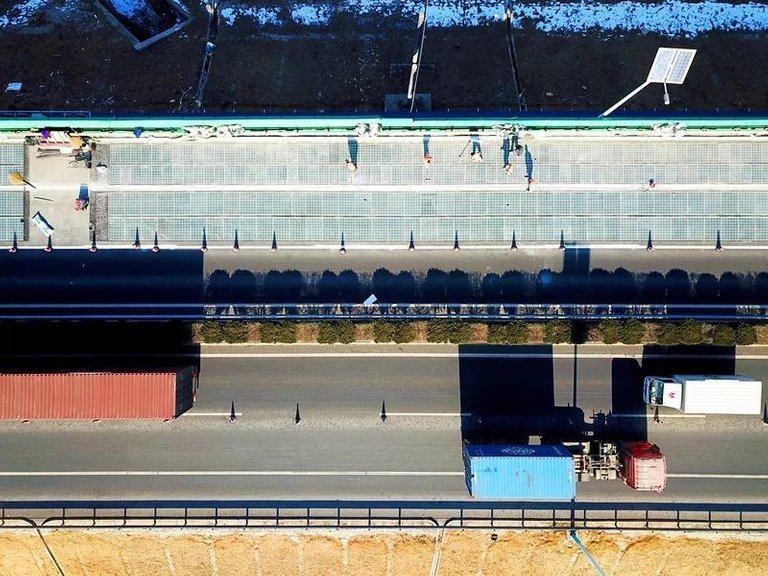
▲ photovoltaic pavement test section overlooking the film
The development of optical road pavement depends on the common progress of road engineering and photovoltaic power generation engineering technology. With the increase of industrialization and technology breakthrough, the cost of photovoltaic pavement will decrease. For example, the new perovskite photovoltaic cells, higher photoelectric conversion rates, cheaper prices, about 60% of the cost of space down.
3
Can I move the car through the high-speed photovoltaic charging it?
Photovoltaic pavement is the best carrier for mobile electric vehicles in the future. The wireless charging technology of electric vehicles is improving day by day. The state is formulating relevant technical standards and norms. It is believed that there will be commercial products available in 2018.
Amazing, my Shandong!
Amazing, made in China!